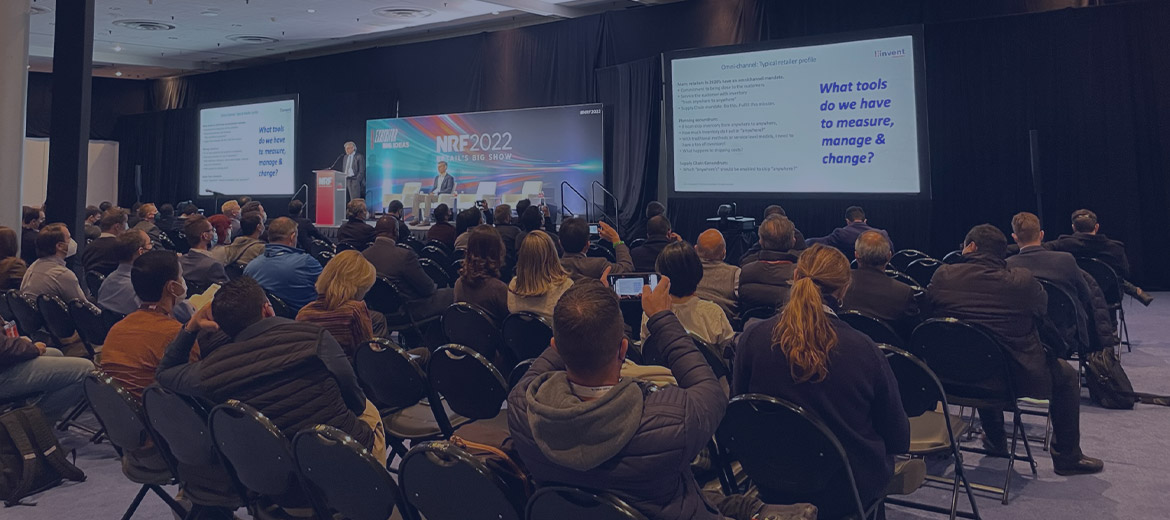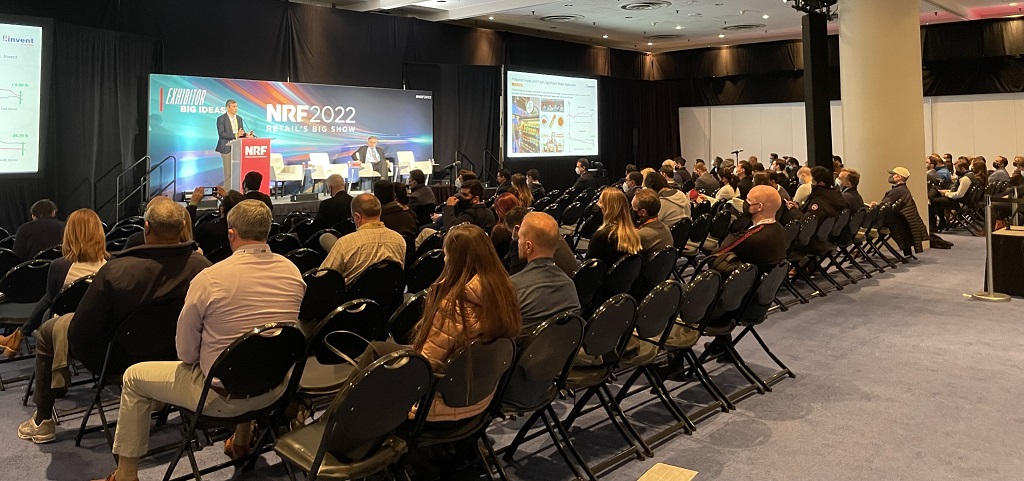
4 Key Takeaways from NRF 2022
That’s a wrap on NRF 2022.
We’ve rounded up the top retail inventory planning insights from the retail industry’s biggest event – so whether you made it or not, you can stay in the loop with this year’s big themes.
4 Core Retail Inventory Planning Themes Discussed at NRF 2022
In 2022, retail leaders must commit to innovation
After the events of the past 20 months, it’s no surprise that the need for retailers to innovate amid disruption and omni-channel retailing has continued to be a hot topic.
Speaking about the inventory planning challenges faced by retailers during an insightful Big Ideas Session, Gürhan Kök, CEO at Invent Analytics, pointed to the laser-focus of high-performing retailers. “You see retailers that focus on having omni-channel retail planning capabilities are getting extremely good at giving fantastic customer experiences,” Kök said.
“During three days at NRF 2022, I’ve met with many retail leaders all around the world. They all agree to the fact that omni-channel has become the only channel for consumers, shifting retail from a linear single-channel flow into a network model of omni-channel flows. These retailers have already started investing in transactional capabilities. But in 2022, we are in the third stage of omni-channel evolution.” he added.
“To succeed, retailers need smart, future-ready supply chain planning systems to predict omni-demand, and position inventory across the retail network of stores and fulfillment centers with the anticipation of omni-flows. And that’s what Invent Analytics’ Omni-Plan delivers,” said Gurhan Kok, Founder & CEO, Invent Analytics.

Omni-channel customers will fuel the future of retail planning
One thread ran through almost every retail inventory planning conversation during NRF 2022: putting omni-channel customers at the heart of demand forecasting and allocation is critical to success.
One of the biggest challenges in 2021 was around demand forecasting and allocation. Today, retailers need to radically align their operations with their omni-customers, according to Burak Ovunc, CEO at FLO International Shoe Group.
Retailers should always ask themselves what do our omni-customers want? Where do they want it? And how fast do they want it? But, more importantly, in 2022, they need to have highly accurate forecasts at all levels of granularity in their demand planning to be able to meet the demands of their customers.
Omni-fulfillment is a must for forward-thinking retailers
According to NRF, consumers have higher expectations in post-pandemic era. In fact, 83% of them now expect flexible shipping and fulfillment options.
Now that omni-customers demand faster delivery times and even same-day delivery is becoming a common option, retailers should think carefully about where to position their limited inventory to provide services to their customers within a day or two. But, more importantly, they need to think about how they can do so at a low cost.
Online fulfillment costs make up as much as 10-20% of revenues for some retailers creating a significant challenge to service the omni-customers profitably.
Forward-thinking retailers realize that a good OMS system (distributing the existing inventory) will not be sufficient to address this challenge. What they need is to change how they plan and position inventory to fulfill customer demand fast while minimizing fulfillment costs, zone-hopping, and split basket shipments in 2022.

Supply chain planning of 2022: Demand-driven and profit-optimized
Despite all the increased capabilities in transactional systems and increased visibility across channels, many retailers mentioned during NRF 2022 that their organizations are still silo-driven.
Retail and omni-channel sides have different objectives and the KPIs are separated, resulting in a lack of unified perspective across the organization and planning and execution processes.
Similarly, some of the old problems remain unsolved, and these pain points are slowing the efficiency of omni-channel retailing. Mainly, retailers continue to rely heavily on inaccurate forecasts and plans and leave the execution to rule and experience-based decision mechanisms.
However, we see that these pain points of omni-channel retailing are minimized by those modern retailers who establish a demand-driven, profit-optimized supply chain planning process that works both top-to-bottom and bottom-up from the most granular level.
The future of retail planning
NRF 2022 demonstrated that the omni-channel retail supply chain space is evolving quickly. Clearly, 2022 will be the year where they will focus more on increasing their capabilities in demand forecasting and inventory planning. In the omni-channel world and there is a need for omni-channel, profit-optimizing retail planning systems in 2022 and beyond.
So, if you’re interested in profit-optimizing your inventory planning and execution to stay ahead in the omni-channel retail space, get in touch with our retail experts today. In 2022, transform your retail planning into a competitive weapon.


